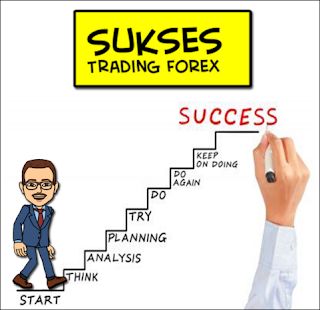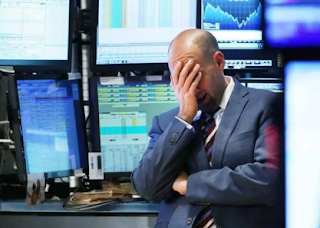20 Things You Need to Know to be a Successful Trader - Forex has caused large losses to many inexperienced and undisciplined traders over the years. You need not be one of the losers. Here are twenty
Forex Trading Tips that you can use to avoid disasters and maximize your potential in the currency exchange market.
1. Know yourself. Define your risk tolerance carefully. Understand your needs.
To profit in trading, you must make recognize the markets. To recognize the markets, you must first know and recognize yourself. The first step of gaining self-awareness is ensuring that your risk tolerance and capital allocation to forex and trading are not excessive or lacking. This means that you must carefully study and analyze your own financial goals in engaging forex trading.
2. Plan your goals. Stick to your plan.
Once you know what you want from trading, you must systematically define a timeframe and a working plan for your trading career. What constitutes failure, what would be defined as success? What is the timeframe for the trial and error process that will inevitably be an important part of your learning? How much time can you devote to trading? Do you aim at financial independence, or merely aim to generate extra income? These and similar questions must be answered before you can gain the clear vision necessary for a persistent and patient approach to trading. Also, having clear goals will make it easier to abandon the endeavor entirely in case that the risks/return analysis precludes a profitable outcome.
3. Choose your broker carefully.
While this point is often neglected by beginners, it is impossible to overemphasise the importance of the choice of broker. That a fake or unreliable broker invalidates all the gains acquired through hard work and study is obvious. But it is equally important that your expertise level, and trading goals match the details of the offer made by the broker. What kind of client profile does the forex broker aim at reaching? Does the trading software suit your expectations? How efficient is customer service? All these must be carefully scrutinised before even beginning to consider the intricacies of trading itself.Please refer to our forex broker reviews to find a reliable broker that suites your trading style.
4. Pick your account type, and leverage ratio in accordance with your needs and expectations.
In continuation of the above item, it is necessary that we choose the account package that is most suited to our expectations and knowledge level. The various types of accounts offered by brokers can be confusing at first, but the general rule is that lower leverage is better. If you have a good understanding of leverage and trading in general, you can be satisfied with a standard account. If you’re a complete beginner, it is a must that you undergo a period of study and practice by the use of a mini account. In general, the lower your risk, the higher your chances, so make your choices in the most conservative way possible, especially at the beginning of your career.
Read also:
9 Tutorials Become a Successful Forex Trader
5. Begin with small sums, increase the size of your account through organic gains, not by greater deposits.
One of the best tips for trading forex is to begin with small sums, and low leverage, while adding up to your account as it generates profits. There is no justification to the idea that a larger account will allow greater profits. If you can increase the size of your account through your trading choices, perfect. If not, there’s no point in keeping pumping money to an account that is burning cash like an furnace burns paper.
6. Focus on a single currency pair, expand as you better your skills.
The world of currency trading is deep and complicated, due to the chaotic nature of the markets, and the diverse characters and purposes of market participants. It is hard to master all the different kinds of financial activity that goes on in this world, so it is a great idea to restrict our trading activity to a currency pair which we understand, and with which we are familiar. Beginning with the trading of the currency of your nation can be a great idea. If that’s not your choice, sticking to the most liquid, and widely traded pairs can also be an excellent practice for both the beginner and the advanced traders.
Read also:
5 Tips From Traders Successful Magic $ 600 to $ 100,000
7. Do what you understand.
Simple as it is, failure to abide by this principle has been the doom of countless traders. In general, if you’re unsure that you know what you’re doing, and that you can defend your opinion with strength and vigor against critics that you value and trust, do not trade. Do not trade on the basis of hearsay or rumors. And do not act unless you’re confident that you understand both the positive consequences, and the adverse results that may result from opening a position.
8. Do not add to a losing position.
While this is just common sense, ignorance of the principle, or carelessness in its employment has caused disasters to many traders in the course of history. Nobody knows where a currency pair will be heading during the next few hours, days, or even weeks. There are lots of educated guesses, but no knowledge of where the price will be a short while later. Thus, the only certain value about trading is now. Nothing much can be said about the future. Consequently, there can be no point in adding to a losing position, unless you love gambling. A position in the red can be allowed to survive on its own in accordance with the initial plan, but adding to it can never be an advisable practice.
9. Restrain your emotions.
Greed, excitement, euphoria, panic or fear should have no place in traders’ calculations. Yet traders are human beings, so it is obvious that we have to find a way of living with these emotions, while at the same time controlling them and minimizing their effect on our lives. That is why traders are always advised to begin with small amounts. By reducing our risk, we can be calm enough to realize our long term goals, reducing the impact of emotions on our trading choices. A logical approach, and less emotional intensity are the best forex trading tips necessary to a successful career.
Read also:
Tips for Doing Forex Trading While Working For Beginners
10. Take notes. Study your success and failure.
An analytical approach to trading does not begin at the fundamental and technical analysis of price trends, or the formulation of trading strategies. It begins at the first step taken into the career, with the first dollar placed in an open position, and the first mistakes in calculation and trading methods. The successful trader will keep a diary, a journal of his trading activity where he carefully scrutinizes his mistakes and successes to find out what works and what does not. This is one of the most importance forex trading tips that you will get from a good mentor.
11. Automate your trading as much as possible.
We already noted the importance of emotional control in ensuring a successful and profitable career. In order to minimize the role of emotions, one of the best of courses of action would be the automatization of trading choices and trader behavior. This is not about using forex robots, or buying expensive technical strategies. All that you need to do is to make sure that your responses to similar situations and trading scenarios are themselves similar in nature. In other words, don’t improvise. Let your reactions to market events follow a studied and tested pattern.
12. Do not rely on forex robots, wonder methods, and other snake oil products.
Surprisingly, these unproven and untested products are extremely popular these days, generating great profits for their sellers, but little in the way of gains for their excited and hopeful buyers. The logical defense against such magical items is in fact easy. If the genius creators of these tools are so smart, let them become millionaires with the benefit of their inventions. If they have no interest in doing as much, you should have no interest in their creations either.
13. Keep it simple. Both your trade plans and analysis should be easily understood and explained.
Forex trading is not rocket science. There is no expectation that you be a mathematical genius, or an economics professor to acquire wealth in currency trading. Instead, clarity of vision, and well-defined, carefully observed goals and practices offer the surest path to a respectable career in forex. To achieve this, you must resist the temptation to over explain, overanalyze, and most importantly, to rationalize your failures. A failure is a failure regardless of the conditions that led to it.
Read also:
Basic Forex Trading Techniques for Beginners
14. Don’t go against the markets, unless you have enough patience and financial resilience to stick to a long term plan.
In general, a beginner is never advised to trade against trends, or to pick tops and bottoms by betting against the main forces of market momentum. Join the trends so that your mind can relax. Fight the trends, and constant stress and fear will wreck your career.
read also:
How to Create Your Own Forex Robot (Expert Advisor) Simply
15. Understand that forex is about probabilities.
Forex is all about risk analysis and probability. There is no single method or style that will generate profits all the time. The key to success is positioning ourselves in such a way that the losses are harmless, while the profits are multiplied. Such a positioning is only possible by managing our risk allocations in accordance with an understanding of probability and risk management.
16. Be humble and patient. Do not fight the markets.
Recognize your failures, and try to accommodate them if they can’t be eliminated completely. Above all, resist the illusion that you somehow possess the alchemist’s stone of trading. Such an attitude will surely be ruinous on your career eventually.
17. Share your experiences. Follow your own judgment.
While it is a great idea to discuss your opinion on the markets with others, you should be the one making the decisions. Consider the opinions of others, but make your own choices. It is your money after all.
18. Study money management.
Once we make profits, it is time to protect them. Money management is about the minimization of losses, and maximization of profits. To ensure that you don’t gamble away your hard-earned profits, to “cut your losses short, and let profits ride”, you should keep the bible of money management as the centerpiece of your trading library at all times.
read also:
How To Start Forex Trading For Beginners
19. Study the markets, fundamentals, and technical factors leading the price action.
That we have placed this so low in the list should not surprise the experienced trader. Faulty analysis is rarely the cause of a wiped-out account. A career that fails to begin is never killed by the consequences of erronerous application or understanding of fundamental or technical studies. Other issues that are related to money management, and emotional control are far more important than analysis for the beginner, but as those issues are overcome, and steady gains are realized, the edge gained by successful analysis of the markets will be invaluable. Analysis is important, but only after a proper attitude to trading and risk taking is attained.
20. Don’t give up.
Finally, provided that you risk only what you can afford to lose, persistence, and a determination to succeed are great advantages. It is highly unlikely that you will become a trading genius overnight, so it is only sensible to await the ripening of your skills, and the development of your talents before giving up. As long as the learning process is painless, as long as the amounts that you risk do not derail your plans about the future and your life in general, the pains of the learning process will be harmless.
Some tips that I can share this time about
20 Things You Need to Know to be a Successful Trader. Hopefully useful and good luck.













